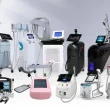Introduction
Chimeric Antigen Receptor T-cell (CAR-T) therapy has rapidly reshaped the field of immuno-oncology by reprogramming a patient’s T cells to recognize and destroy tumor cells. Originally developed for hematological malignancies, CAR-T therapy is now expanding toward solid tumors, autoimmune conditions, and infectious diseases. A central element of its success lies in the careful selection of CAR-T targets, which determine specificity, efficacy, and safety.
Understanding CAR-T Targets
CAR-T targets are typically antigens expressed on the surface of diseased cells but absent or minimally present on healthy tissues. Selecting the right target balances two critical needs: maximizing tumor killing while minimizing off-tumor, on-target toxicity. Ideal CAR-T targets demonstrate high, homogeneous expression across tumor cells and restricted expression elsewhere.
What Is CAR-T Cell Therapy?
CAR-T stands for Chimeric Antigen Receptor T-cell therapy. It is a type of immunotherapy that boosts the body’s natural defense system against cancer. In this process, T cells—important immune cells—are taken from the patient’s blood. Scientists then modify these cells in a lab to add special receptors called CARs. These receptors allow the T cells to better identify and attack cancer cells when they are returned to the patient’s body.
The success of CAR-T therapy depends largely on choosing the right targets. Targets are specific proteins or markers found on the surface of cancer cells. By directing T cells to these targets, the therapy can focus its attack on harmful cells while sparing healthy ones.
Why Are CAR-T Targets Important?
Targets are like the address labels for the CAR-T cells. If the label points correctly to cancer cells, the therapy works well. If the target is not specific or present on healthy cells, side effects can occur. Finding the best targets means better treatment effectiveness and fewer risks.
In 2025, researchers continue to discover new targets and improve existing ones. This helps widen the scope of CAR-T therapy beyond blood cancers to solid tumors and other difficult-to-treat cancers.
Common and Emerging CAR-T Therapy Targets in 2025
1. CD19
CD19 is one of the most well-known and successful CAR-T targets. It is found on the surface of many B-cell cancers, including certain types of leukemia and lymphoma. Therapies targeting CD19 have already been approved and have shown remarkable results in patients.
2. BCMA (B-cell Maturation Antigen)
BCMA is a newer target primarily used to treat multiple myeloma, a cancer of plasma cells. CAR-T therapies aimed at BCMA are gaining approval and showing promising patient responses.
3. CD22
CD22 is another target for B-cell cancers. It is sometimes used when cancer cells stop expressing CD19, helping provide an alternative attack point.
4. HER2 (Human Epidermal Growth Factor Receptor 2)
HER2 is a protein found in some breast and gastric cancers. CAR-T therapies targeting HER2 are being researched to expand treatment options for these solid tumors.
5. EGFR (Epidermal Growth Factor Receptor)
EGFR is present in various cancers, including lung, colon, and head and neck tumors. Targeting EGFR with CAR-T cells is part of ongoing trials exploring solid tumor treatments.
6. Mesothelin
Mesothelin is another promising target in cancers like mesothelioma and pancreatic cancer. Its limited presence on healthy cells makes it attractive for CAR-T therapy.
7. CD30
CD30 is a target in Hodgkin lymphoma and some other lymphomas. CAR-T treatments focusing on CD30 are showing encouraging clinical results.
Expanding Horizons: New Targets and Combination Approaches
In 2025, scientists are not only focusing on individual targets but also on combination therapies. Some CAR-T cells are designed to recognize two targets at once, improving accuracy and reducing chances of cancer escape.
New targets under study include:
- FLT3 in acute myeloid leukemia
- GPC3 (Glypican-3) in liver cancer
- CLL-1 in acute myeloid leukemia
- ROR1 (Receptor tyrosine kinase-like orphan receptor 1) in various cancers
These emerging targets hold promise for expanding CAR-T therapy to more cancer types.
Challenges in CAR-T Target Development
Despite many successes, developing CAR-T targets comes with challenges:
- Tumor Heterogeneity: Not all cancer cells show the same targets, making it harder to eliminate every malignant cell.
- On-target, Off-tumor Toxicity: Some targets are also on healthy cells, which can cause side effects. Researchers work to balance safety and effectiveness.
- Solid Tumor Barriers: Unlike blood cancers, solid tumors have physical and immune barriers that limit CAR-T cell access and function. Finding targets and methods to overcome these barriers is key.
Current Clinical Targets
The most well-studied CAR-T targets are in blood cancers:
- CD19: A gold-standard target for B-cell malignancies, leading to FDA-approved therapies such as tisagenlecleucel and axicabtagene ciloleucel.
- BCMA (B-cell maturation antigen): A critical target in multiple myeloma, with multiple clinical-stage CAR-T products.
- CD22 and CD20: Additional B-cell lineage markers under investigation for relapsed or resistant leukemias.
These hematological targets highlight the strength of CAR-T therapy where surface antigen expression is well-characterized and relatively specific.
Types of CAR-T Cell Therapy
As targets diversify, so do the types of CAR-T cell therapy being developed:
- Autologous CAR-T cells: The patient’s own T cells, engineered individually; highly personalized but time-consuming.
- Allogeneic CAR-T cells: Universal donor-derived T cells, offering “off-the-shelf” availability and faster deployment.
- Dual- or multi-specific CAR-T cells: Capable of recognizing more than one antigen, designed to reduce tumor escape.
- Armored CAR-T cells: Engineered to secrete cytokines (e.g., IL-12) or resist checkpoint inhibition, enhancing function in hostile tumor environments.
These approaches expand the reach of CAR-T therapy while addressing current limitations of durability, manufacturing, and toxicity.
Expanding Toward Solid Tumors
Solid tumors pose unique challenges, including heterogeneous antigen expression, physical barriers to T-cell infiltration, and an immunosuppressive microenvironment. Nevertheless, several types of CAR-T cell therapy are being tested:
- HER2 and EGFR: Commonly overexpressed in breast, gastric, and colorectal cancers.
- GD2: A target in neuroblastoma and other sarcomas.
- Mesothelin: Overexpressed in mesothelioma, pancreatic, and ovarian cancers.
- MUC1 and CEA: Investigated in epithelial tumors.
Though promising, these targets require careful optimization due to expression overlap with healthy tissues.
Innovative Targeting Strategies
To overcome limitations, researchers are exploring:
- Dual-target CAR-T cells: Requiring recognition of two antigens to reduce off-tumor effects.
- Logic-gated CARs: Using AND/NOT signaling circuits to fine-tune recognition.
- Secretory CAR-T cells: Engineered to release checkpoint inhibitors or cytokines at tumor sites.
Such innovations expand the repertoire of CAR-T targets while addressing the safety and efficacy trade-offs.
Beyond Oncology: Emerging CAR-T Targets
CAR-T therapy is being tested outside oncology as well:
- Autoimmune diseases: Targeting autoreactive B cells in lupus (e.g., CD19-directed CAR-T).
- Infectious diseases: Exploring HIV and hepatitis B by targeting viral reservoirs.
These efforts showcase the adaptability of CAR-T design in tackling immune-driven diseases.
Comparative Overview of CAR-T Targets
| Target Antigen | Associated Cancers | Advantages | Key Challenges |
| CD19 | ALL, CLL, DLBCL | Well-validated, high efficacy | Antigen loss, B-cell aplasia |
| CD22 | B-ALL, lymphomas | Useful post-CD19 relapse | Antigen modulation, durability |
| CD33 | AML | Broad expression on AML blasts | Myelotoxicity due to normal cell overlap |
| CD123 | AML, BPDCN | Strong expression on leukemic stem cells | Off-tumor toxicity in myeloid lineage |
| HER2 | Breast, gastric, ovarian | High expression in solid tumors | Risk of off-tumor cardiac/lung toxicity |
| Mesothelin | Pancreatic, mesothelioma, ovarian | Tumor-restricted overexpression | Heterogeneous expression, microenvironment barriers |
| GD2 | Neuroblastoma, sarcomas | Well-defined pediatric target | Neurological toxicity, limited persistence |
Where to Source CAR-T Research Tools
For researchers working on CAR-T targets and related immunotherapy studies, sourcing reliable proteins, antibodies, and assay kits is essential. Common suppliers that provide CAR-T research reagents include:
- Creative BioMart
- R&D Systems
- Bio-Techne
- Sino Biological
- Abcam
- Miltenyi Biotec
- Thermo Fisher Scientific
- GenScript
Conclusion
The evolution of CAR-T cell therapy continues to depend on identifying and refining novel CAR-T targets. While hematological malignancies remain the most successful field, advances in types of CAR-T cell therapy for solid tumors, autoimmune disorders, and infectious diseases highlight its expanding potential. With improved targeting strategies and reliable research tools, CAR-T therapy is poised to move from a breakthrough treatment into a versatile therapeutic platform across medicine.
Frequently Asked Questions (FAQ)
Q:1 What are the main types of CAR-T cell therapy?
A: CAR-T therapies are generally categorized by their target antigen (e.g., CD19, BCMA) and by the generation of CAR design (first through fifth generation). Hematological vs. solid tumor CAR-T therapies also form major categories.
Q:2 How are CAR-T targets selected?
A: Targets are chosen based on tumor-specific expression, limited presence in healthy tissue, and ability to activate strong T-cell responses.
Q:3 Why is targeting solid tumors more difficult?
A: Antigen heterogeneity, tumor microenvironment barriers, and potential toxicity limit efficacy compared with blood cancers.
Q:4 What future directions are most promising?
A: Dual-targeting CARs, armored CARs, and expansion into autoimmune and infectious diseases represent the next frontier.
Article link: https://worldwidedigest.com/












